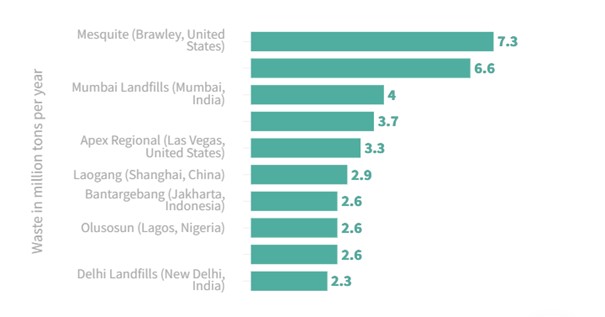Overproduction and overconsumption are posing a large threat at the environment as the vast majority of the waste generated by them ends up in landfills, yet there hasn’t been consensus on how to tackle this issue on a global level. Municipal solid waste (MSW) is composed of all the things used on a daily basis such as food, packaging or electronics. Unfortunately, currently less than 20% of this waste is recycled while the rest goes on to landfills. According to the United Nations Environment Programme (UNEP), if there is no change in policy, the production of municipal solid waste will increase by about 2 billion tons by 2050.
The largest landfills are located in the Las Vegas, Mexico City and Shanghai when we are looking at it in terms of covered area, however, when looking at it in terms of annual volume of waste, the list changes significantly.

1: List of the largest landfills in terms of annual volume of waste
The Global Waste Index analyses how the most developed countries generate and recycle their waste. It is applied to the 38 members of the Organization for Economic Cooperation and Development (OECD). It is important to note that waste incineration is better than landfill in terms of impact, however, only 17 nations on the list incinerate more than they landfill. The top 3 countries are; South Korea, Denmark and Germany as they all recycle efficiently and use waste incineration over landfills more.

2:Global Waste Index 2022
It’s clear that the more populated the country is and the larger its economy, the more waste they generate. On the other hand, it is also important to look at the efforts made by governments in terms of sustainability. It is also visible that overconsumption as a trend is hard to overcome and both high and low-income countries suffer the consequences.
Our summary article is based on the article World waste: statistics by country and brief facts by Daniil Filipenco. Development Aid
Original article: World waste: statistics by country and brief facts DevelopmentAid



 HU
HU  EN
EN 
